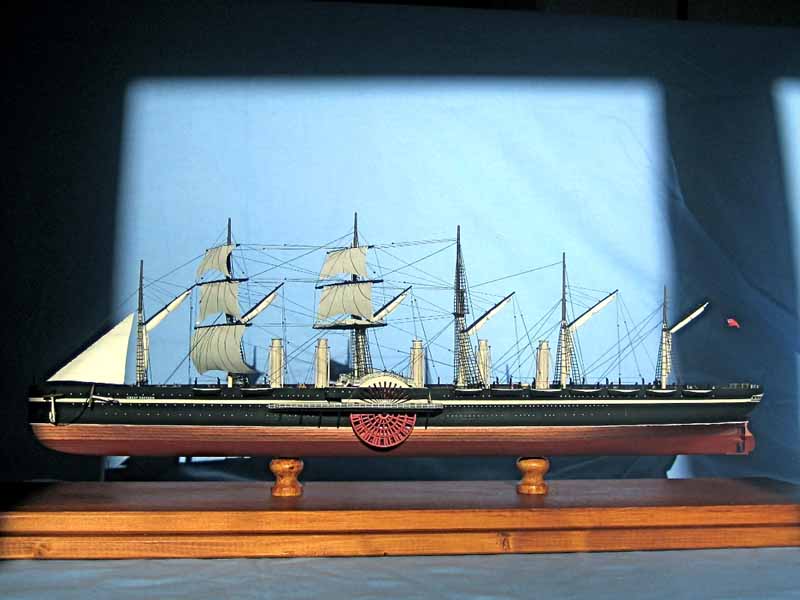by Mario Busto

1/388 SS Great Eastern (Revell)

Here is a 1/388 scale model of SS Great Eastern from Revell, an old kit I got on E-Bay. It was not very detailed and I didn't want to add that much, but I wanted to represent the ship at the time of its first successful cruise though the Atlantic, when arriving in New York in June 1860 (the travel lasted some 10 days) . So, as the Revell model represented the ship at the time of its use as cable lying ship, I had to scratch-build a funnel, and then add the floor of the lower bridge in front of the paddles house, plus the scratch-built of what I think was an emergency rudder steering at the ship's back, and added PART and SAEMANN 1:350 railings and stairs. The ship could not use full sails and steam at the same time because of fire danger, but apparently witnesses say it used part of its some 6000 sqm of sails, so I took the occasion to represent it with some sails on, sailing rather close to the wind. The rigging is made with thin fishing line. I tried to give the feeling of the ship's size, and to make it slightly lively, by adding ABER 1/350 figures, "dressed" according to the time: I only had 70 of them, but they almost disappear on the huge deck.
SS Great Eastern project belongs to Isambard Kingdom Brunel, who died in 1859, before his ship's entry into service. He was a great engineer and his ship was conceived for a travel from Great Britain to Australia non-stop. The ship was 211 m long (exceeded only in 1899 by RMS Oceanic) and had room for 4000 people, had a steel double hull made out of riveted plates, and a large amount of standardized components. The 6 masts were for safety, should the ship run out of coal, the main propulsion being represented by paddles and a propeller, powered by separate steam machines capable of 3400 and 4900 HP respectively for a speed of 14 knots. Actually it was always slower, also because of algae growing on the large hull. The ship was a technical success but...a commercial failure for various reasons: a bit of misfortune due to accidents (but the double hull rescued the ship in one occasion) , then the very high costs and the attempt to attract "rich" clients with comfort and luxury, rather than going for the emigrants market thanks to its large transport capability. It was successful as a cable lying ship in 1866-74, lying transatlantic cables. It was scrapped in 1888, taking almost two years to demolish. Hope the model is luckier...
